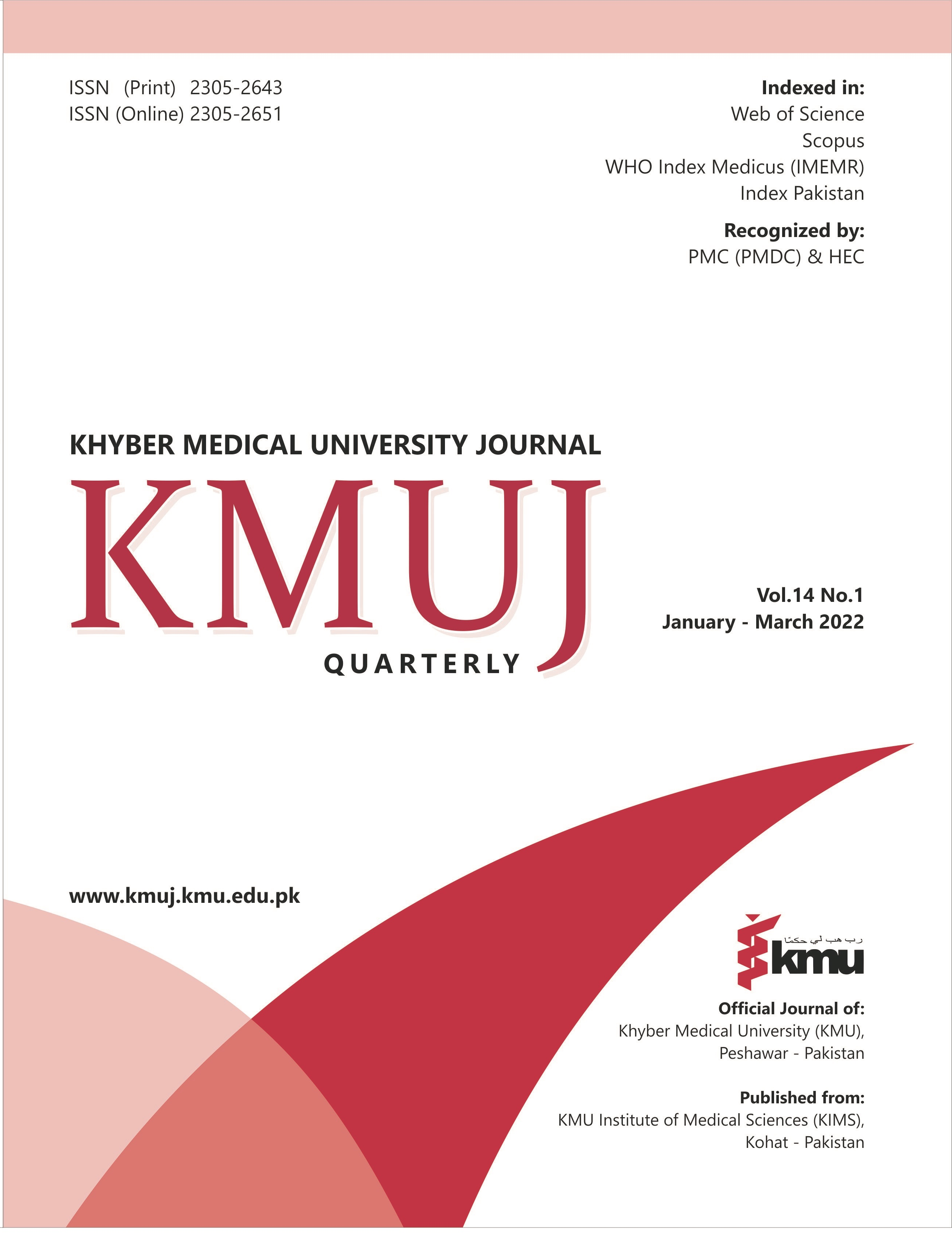GLUTARIC ACIDEMIA TYPE 1: A CASE REPORT FROM PAKISTAN
Main Article Content
Abstract
INTRODUCTION: Glutaric aciduria type 1 is a neurometabolic disorder occurring due to deficient activity of glutaryl-CoA dehydrogenase. Multiple neurotoxic metabolites start accumulating in plasma, CSF and urine which are detected by mass spectrometry. Early new-born screening plays an important role in early diagnosis whereas typical radiographic features and metabolic workup supports the diagnosis. Treatment guidelines have been constructed to prevent acute encephalopathic crisis and remove neurotoxic metabolites from plasma to prevent brain damage, the goal of treatment.
CASE PRESENTATION: An eight month old male patient presented with fever, seizures and altered level of consciousness. He was macrocephalic with examination findings suggestive of upper motor neuron lesion. The typical radiologic features suggestive of glutaric aciduria type 1 were noticed in neuroimaging. Workup for inborn error of metabolism confirmed the same. Early treatment was started keeping a metabolic disease consultant on board. The patient was safely discharged from hospital after stabilization and is well till date.
CONCLUSION: This case is being reported to emphasize the importance of early diagnosis, timely management and adherence to proper treatment in paediatric patients presenting with metabolic crisis. This can help prevent irreversible damage in patients especially in the ones diagnosed as glutaric aciduria type 1.
Article Details
Work published in KMUJ is licensed under a
Creative Commons Attribution 4.0 License
Authors are permitted and encouraged to post their work online (e.g., in institutional repositories or on their website) prior to and during the submission process, as it can lead to productive exchanges, as well as earlier and greater citation of published work.
(e.g., in institutional repositories or on their website) prior to and during the submission process, as it can lead to productive exchanges, as well as earlier and greater citation of published work.
References
Ribeiro JV, Lucas TG, Bross P, Gomes CM, Henriques BJ. Potential complementation effects of two disease-associated mutations in tetrameric glutaryl-CoA dehydrogenase is due to intersubunit stability-activity counterbalance. Biochim Biophys Acta Proteins Proteom 2020;1868(1):140269. https://doi.org/10.1016/j.bbapap.2019.140269
Schor DS, Verhoeven NM, Struys EA, ten Brink HJ, Jakobs C. Quantification of 3-hydroxyglutaric acid in urine, plasma, cerebrospinal fluid and amniotic fluid by stable-isotope dilution-negative chemical ionization gas chromatography-mass spectrometry. J Chromatogr B Analyt Technol Biomed Life Sci 2002;780(1):199-204. https://doi.org/10.1016/s1570-0232(02)00406-3
Bouchereau J, Schiff M. Inherited Disorders of Lysine Metabolism: A Review. J Nutr 2020;150(Suppl 1):2556S-60S. https://doi.org/10.1093/jn/nxaa112
Mohamed S, Elsheikh W, Al-Aqeel AI, Alhashem AM, Alodaib A, Alahaideb L, et al. The incidence of newborn screening disorders among 56632 infants in Central Saudi Arabia. A 6-year study. Saudi Med J 2020;41(7):703-8. https://doi.org/10.15537/smj.2020.7.25147
Kılavuz S, Bulut D. The outcome of 41 Late-Diagnosed Turkish GA-1 Patients: A Candidate for the Turkish NBS. Neuropediatrics 2021;52(5):358-69. https://doi.org/10.1055/s-0040-1722691
Afroze B, Yunus ZM. Glutaric aciduria type 1 - importance of early diagnosis and treatment. J Pak Med Assoc 2014;64(5):593-5.
Boy N, Heringer J, Haege G, Glahn EM, Hoffmann GF, Garbade SF, et al. A cross-sectional controlled developmental study of neuropsychological functions in patients with glutaric aciduria type I. Orphanet J Rare Dis 2015;10:163. https://doi.org/10.1186/s13023-015-0379-6
Prasun P. Multiple Acyl-CoA Dehydrogenase Deficiency. In: Adam MP, Ardinger HH, Pagon RA, Wallace SE, Bean LJH, Stephens K, et al., editors. GeneReviews® [Internet]. 1993-2020, University of Washington, Seattle, USA.
Kyllerman M, Skjeldal O, Christensen E, Hagberg G, Holme E, Lönnquist T, et al. Long-term follow-up, neurological outcome, and survival rate in 28 Nordic patients with glutaric aciduria type 1. Eur J Paediatr Neurol 2004;8(3):121-9. https://doi.org/10.1016/j.ejpn.2003.12.007
Guerrero RB, Salazar D, Tanpaiboon P. Laboratory diagnostic approaches in metabolic disorders. Ann Transl Med 2018;6(24):470. https://doi.org/10.21037/atm.2018.11.05
